
Surveillance Monitoring:
How It Helps Deter Crime and Secures Your Business
If you’re a business owner, you know that the safety and security of your employees and customers is always a top priority. One way to help deter crime and ensure the safety of your business is through surveillance monitoring. In this definitive guide, we’ll discuss how surveillance monitoring can help secure your business. We’ll also provide some tips on how to get started with surveillance monitoring at your business.
What is video surveillance?
Video surveillance is a system of cameras and other related equipment that monitor activities or environments in real-time. It’s used to observe public places, like streets, parking lots, stores and schools; as well as private locations, such as homes and businesses. In many cases, video surveillance can be routed through closed circuit televisions (CCTV) networks which stream footage to an off-site monitoring station or a control center on site. Video surveillance comes with many advantages, from increased safety and security to criminal investigation assistance – the ability to capture instant information makes it a powerful tool for those looking to protect their people and property.
What is surveillance monitoring?
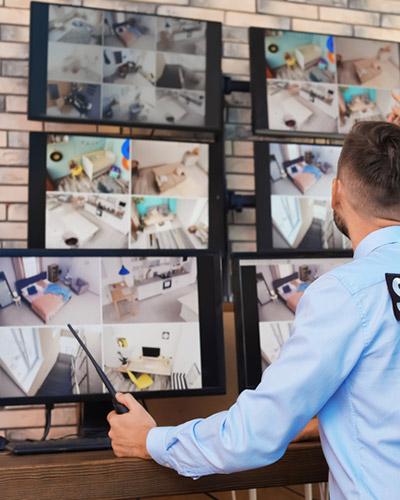
Copyright Chernetskaya | Dreamstime.com
Banner Image: Copyright Andrey Popov | Dreamstime.com
How surveillance monitoring works
What are the types of surveillance monitoring?
- Closed-circuit television (CCTV) systems: These are camera-based systems that can be installed to monitor areas such as parking lots, streets or buildings.
- Audio surveillance: This involves using microphones and audio recorders to capture spoken conversations.
- Mobile surveillance: This type of monitoring uses GPS tracking devices to monitor an individual or vehicle’s movements.
- Facial recognition: This technology uses a person’s facial features to identify them, and can be used in concert with CCTV systems and access control.
- Thermal imaging: This type of monitoring uses infrared cameras to detect heat and can be used to identify people in low-light conditions.
- Radar systems: This technology uses radio waves to detect movement and can be used for perimeter security.
- Motion detection: This type of monitoring uses sensors to detect movement and can be used in conjunction with CCTV systems.
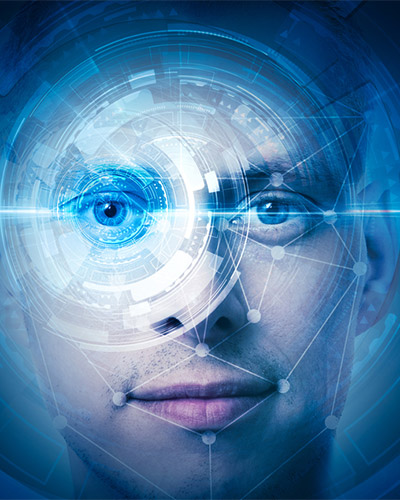
Copyright Dwnld777 | Dreamstime.com
What is remote guarding?
Monitored security system vs. self-monitoring security system
There are numerous options when it comes to security systems, and two of the most popular types are monitored and self-monitored systems.
- Monitored security system: Monitored systems typically involve a monthly fee and are monitored 24/7 by a professional security company. These companies can quickly respond to any alarms that are triggered, allowing for faster response time in the event of an emergency.
- Self-monitoring security system: Self-monitored systems require users to monitor their own alarm systems. Users are typically alerted through emails or text messages when an alarm is triggered, and they must take the necessary steps to respond to the situation.
For those looking for extra peace of mind, monitored systems tend to be the better option because it features a team that is always available to watch over your business. But if you’re comfortable enough with keeping watch yourself then self-monitoring would be a more cost-effective option. Ultimately, the choice between these two security systems comes down to what works best for your needs and budget.
Benefits of surveillance monitoring
Surveillance monitoring provides a wide range of benefits for businesses that are both cost- and time-efficient.
- Increased safety: Surveillance monitoring helps to increase safety by providing an extra layer of protection for businesses and public areas, enabling authorities to respond quickly in the event of a security breach or emergency.
- Reduced crime rates: Studies have shown that surveillance systems can reduce crime rates in monitored areas by up to 95%.
- Improved efficiency: Automated monitoring systems enable businesses to operate more efficiently.
- Cost savings: The cost savings associated with using a surveillance system can be significant, as it eliminates the need for physical security personnel and other costly measures.
- Peace of mind: Surveillance monitoring offers peace of mind that helps people feel safer in their neighborhoods and workplaces.
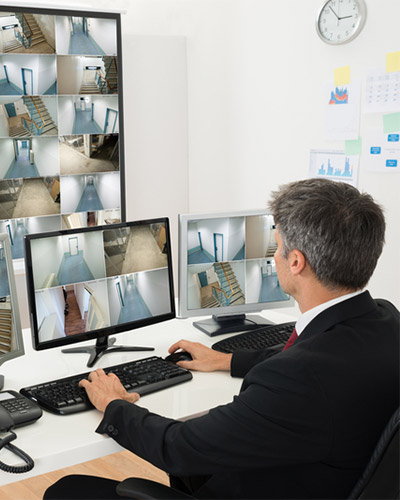
Copyright Andrey Popov | Dreamstime.com
Downside of surveillance monitoring
Surveillance monitoring can be necessary for safety and security, yet it does come with a downside.
- Privacy concerns: Surveillance monitoring can raise privacy concerns, as it is often difficult to determine where the line between necessary and invasive surveillance should be drawn. Being constantly monitored can lead to feelings of anxiety and mistrust, as individuals struggle to balance their right to privacy with the surveillance activity happening around them.
- False alarms: Automated systems are prone to false alarms that can create unnecessary disruptions or concern.
- Expense: Although surveillance monitoring helps save money in the long run, installation and maintenance costs can be expensive.
- Technical difficulties: Automated systems can be complicated to install and maintain, and technical difficulties can result in downtime or other issues.
- Inadequate coverage: If a surveillance system is not properly installed or monitored, it may fail to detect potential threats.
How surveillance monitoring deters crime
An increased presence of visible cameras in public places not only serves as a reminder to potential criminals that they are being watched but also provides evidence should an incident occur. In addition, videos from surveillance systems can be used to accurately identify suspects or as key pieces of evidence in court proceedings. All these factors combine to make surveillance monitoring an essential tool for deterring crime and maintaining safety in communities.
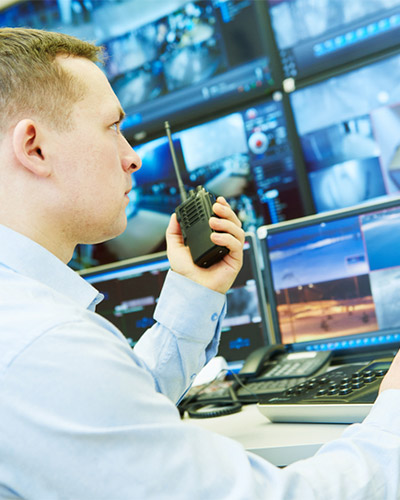
Copyright Dmitry Kalinovsky | Dreamstime.com
How surveillance monitoring secures businesses
Examples of businesses that have installed surveillance monitoring systems
Businesses in a variety of industries have taken action to ensure the safety of their properties by installing surveillance monitoring systems.
- Retail stores like Walmart and Home Depot are two prime examples; they use such systems to deter shoplifters, identify suspicious activity, and keep tabs on employee behavior in their buildings.
- Banks often have similarly advanced security systems in place for the same reasons, along with video cameras for 24/7 monitoring of who goes in and out.
- Small businesses take steps to protect themselves via this technology; restaurants may monitor entry points and certain areas of their kitchens, while gyms may record specific open spots to check for suspicious people or movements.
The usage possibilities are endless, from restaurant dining rooms all the way up to corporate offices and warehouses. Although such measures require an initial setup cost and can represent an increased responsibility for business owners, the benefits are evident – having a surveillance monitoring system in place can provide warning signals that allow companies to prevent possible threats or incidents before they become a full-blown crisis.

Copyright Kittipong Jirasukhanont | Dreamstime.com
Are there legal restrictions on workplace monitoring?
Knowing the various legal restrictions on how an employer can monitor the workplace can help ensure compliance with employment laws and protect both employers and employees from potential liability.
Importance of workplace policies on surveillance monitoring
When creating a security policy, it’s important to strike a balance between employee needs and company requirements to avoid mistrust. This type of transparency will ensure that employees feel respectful of the privacy and safety they may be entitled to in their daily work environment. Workplace policies must be topic-focused, comprehensive, effective and regularly enforced in order for their desired impact to be achieved.
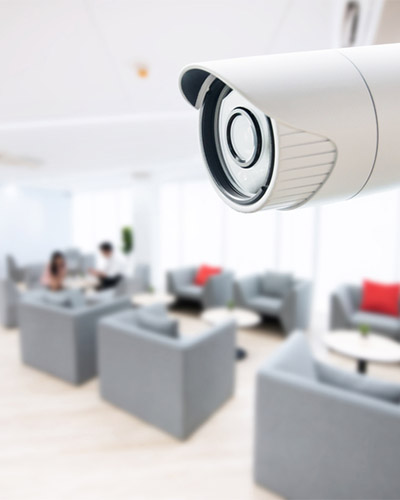
Copyright Ipeema | Dreamstime.com
Tips on choosing the right system for your business
Making the right choice when it comes to selecting the perfect system for your business is crucial. It can prove to be the difference between success and failure. To make sure you’re making an informed decision, ask yourself some important questions about your current and future needs:
- What tasks should this system handle?
- Will it require integration with other systems?
- How secure does the data need to be?
- When defining your budget, expect additional costs such as installation, training, and support.
- Make sure to do a risk assessment so that any potential risks are identified and mitigated.
Learn more in our complete guide to video surveillance systems for business here: https://4ssgtech.com/video-surveillance-systems/
